SEED Grants 2019
Engineering Ion Chains for Quantum Systems
| Thomas Robertazzi SBU, Electical and Computer Engineering Kevin Brown BNL, Collider-Accelerator Department |
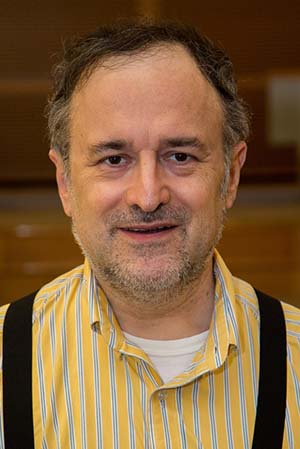 Thomas Robertazzi |
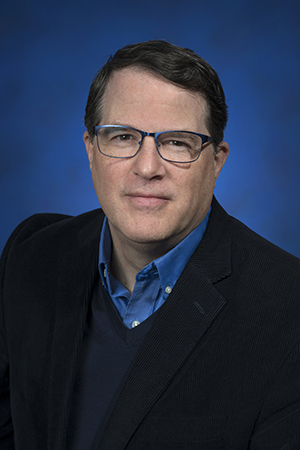 Kevin Brown |
This study involves determining the feasibility of supporting very long ion chains in a storage ring (a type of accelerator) so as to study their use as the basis of quantum information systems such as a quantum computer.
There are multiple ways in which quantum computer elements have been realized or have been proposed to be realized. One is the use of linear ion traps. Each ion (charged particle) represents one qubit (quantum information bit). Traps with only small numbers of linearly arranged ions have been successfully implemented to date.
This project seeks to create a specialized device that is based on a circular storage ring in which one will be able to study both long chains of entangled ions and groups of independent chains of entangled ions, all with non-zero velocity. The storage ring that is proposed has certain scalability advantages allowing large number of qubits (at least in the hundreds). The chains will form a new state of matter (known since the 1990’s) called an ion Coulomb crystal.
This would be basic research related to the use of chains of ions in traps that might be of use in quantum information systems. What is unique in this work is the focus on the design of a device that provides an ability to explore both theoretically and experimentally fundamental engineering issues related to using chains of ions for quantum computation. The goal of this research is do a feasibility study of building a facility at Brookhaven National Laboratory for use by researchers in this area.
Plasma device for contaiminants of emerging concerns (PFAS), pathogens, chemicals removal from water supply and wastewater with record water disinfection rate at low cost
| Xinwei Mao SBU, Civil Engineering Ady Hershcovitch BNL, Collider-Accelerator Department |
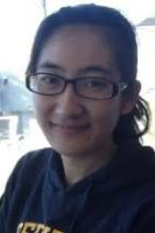 Xinwei Mao |
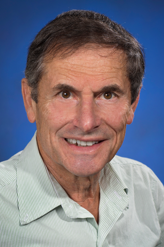 Ady Hershcovitch |
Ultimate purpose of the project is to develop a power efficient water treatment technique that can remove polyfluoroalkyl substances (PFASs), 1,4 Dioxane from the water supply and has the potential for deactivating all pathogens, degrading allpharmaceuticals and other chemical contaminates, by in-water plasma generation, at unprecedented rate, which no existing technique can do. The plasma is in-water vortex stabilized water plasma, in which a novel technology is employed to prevent electrode erosion. It is essentially a blow torch in the water that should disintegrate all contaminants by brute force, since plasma particles, UV and advance oxidation process (AOP) chemicals can break contaminants’ bonds. But, unlike presently utilized or proposed electron beams and plasmas, which are not stabilized, the proposed plasma is stabilized, providing confinement to electrons and ions driving the electric arc, and hence electrical power efficient. Sterilization rates extrapolated from existing electron beam or plasma treatment setups show that a 20 KW prototype wastewater treatment plant, should be capable of disinfecting 2,690 liters/sec of pathogens and degrade 216 liter/sec of antibiotics, if the technique works as expected. These rates per unit power of wastewater recovery are orders of magnitude more efficient than currently utilized disinfection methods or water desalination. The project entails developing a small-scale in water vortex stabilized large diameter arc(an order of magnitude larger than previously achieved).Once the desired plasma is established, the experimental process is straight-forward: known concentrations of PFASs and 1,4 Dioxane are introduced upstream from the plasma arc, and the samples of resultant concentrations downstream from the arc are collected and analyzed. Additionally, UV radiation emitted from the plasma will be measured and quantified to show the plasma potential for deactivating pathogens and degrading pharmaceuticals, since experimental data showing pathogens deactivation and some pharmaceuticals degradation by UV exists.
Building Qubits using Topological Chiral Semimetals
| Mengkun Liu SBU, Physics and Astronomy Qiang Li BNL,Advanced Energy Materials Group |
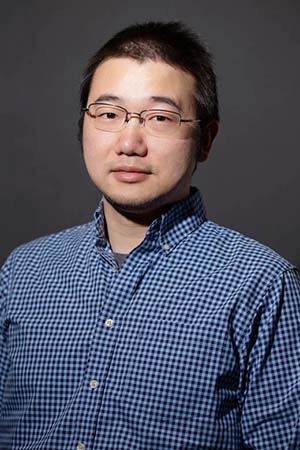 Mengkun Liu |
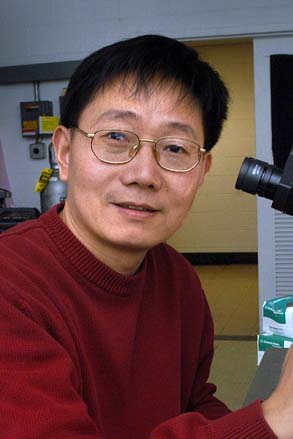 Qiang Li |
Today, operating qubits, such as superconducting Josephson junction devices or trapped ions held in place by laser beams, require very low temperature environment – one of the main obstacles to a mass-producible quantum computer. To circumvent this obstacle, one needs to develop a quantum device that can maintain coherence at much higher temperatures and can be controlled by electromagnetic (EM) radiation. We propose a new type of “Chiral Qubit” device based on 3D Dirac and Weyl semimetals, in which non-dissipative chiral current can be controlled and read out by circularly polarized terahertz (THz) radiation. This new type of chiral materials opens a tantalizing possibility to create a qubit capable of operating at high temperatures, and with a large ratio of the coherence to gate time on the order of 10,000. At the heart of such chiral qubits is an effective manipulation of associated quantum states by EM radiation at THz range, which may be uniquely demonstrated by the observation of THz emission and oscillation in chiral materials - the main goal of this proposal.
Dr. Mengkun Liu and Dr. Qiang Li will initiate research activities to develop a proof of concept quantum computing device composed of topological chiral semi-metals such as TaAs or ZrTe5. Our goal is to demonstrate low dissipation of electron transport in chiral quantum materials with terahertz switching rate, toward achieving the non-dissipative charge transport and long coherence for high-speed quantum computing at room temperature. The PIs and their collaborators form an interdisciplinary team among Stony Brook University (SBU) and Brookhaven National Labs (BNL), which will lead the effort to demonstrate the initial result and work collaboratively towards external funding opportunities.
Quantifying Elemental Segregation and Defects in Additively Manufactured Metallic Materials
| Jason Trelewicz, David Sprouster, Gary Halada SBU, Materials Science and Chemical Engineering Yong Chu, Eric Dooryhee, Hanfei Yan BNL, Photon Sciences |
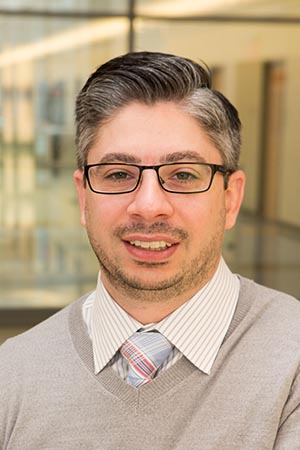 Jason Trelewicz |
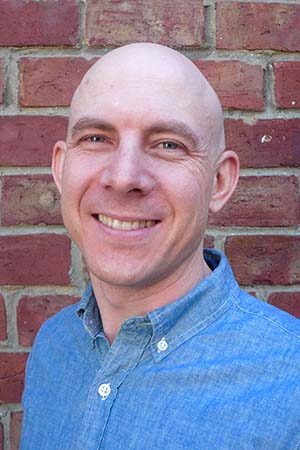 David Sprouster |
 Yong Chu |
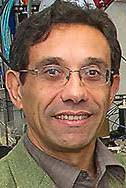 Eric Dooryhee |
Additive manufacturing processes produce materials with hierarchical microstructures containing fusion boundaries at the macroscale, irregular grains and grain boundaries at the microscale, and subgrain dislocation structures at the nanoscale. In stainless steels, corrosion performance has been discussed in the context of chemical heterogeneities formed in the presence of these hierarchical microstructures. However, the large variability in reported measurements underscores the need for statistically significant microstructural data, which is often difficult to access via electron microscopy alone. The goal of this project is to employ directed multi-modal characterization experiments, utilizing the ultra-bright beamlines at the NSLS-II, to characterize defect and material interactions across the hierarchical length scales of additively manufactured stainless steels. X-ray fluorescence and ptychography-based imaging will be conducted at The Hard X-ray Nanoprobe (HXN) beamline to correlate macroscale fusion boundaries and nanoscale dislocation networks with microstructure development and the formation of heterogeneous chemical distributions. X-ray diffraction experiments will performed in parallel at the X-ray Powder Diffraction (XPD) beamline to build quantitative microstructural/precipitate information with chemical characteristics correlated to localized degradation modes and corrosion product formation. The application of multi-modal x-ray based methods will provide direct insight into the microstructural origins of corrosion behavior in additively manufactured stainless steels, which can be used in the development of new models for predicting the corrosion performance of additively manufactured materials.
Quantum Computing for Computational Fluid Dynamics
| Hyun-Kyung Lim SBU, Applied Mathematics and Statistics Yao-Lung (Leo) Fang BNL, Computational Science Initiative |
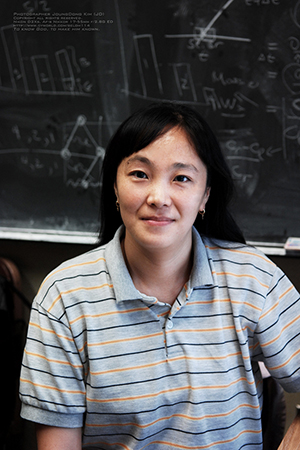 Hyun-Kyung Lim |
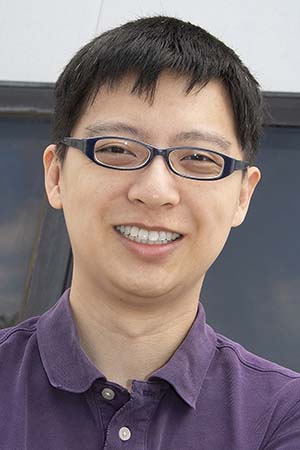 Yao-Lung (Leo) Fang |
Ever since quantum computing (QC) was introduced in the 1980s, it has grown into an active and diverse field of research in recent years. Significant progress has been made in building quantum computers and companies, such as IBM, which are making quantum computers available in public even though the prototype quantum devices are limited to few numbers of qubits and poor error tolerance. Although current quantum computers on the market have limited inter-connectivity between qubits and so noisy that the number of gates is significantly limited in spite of small number of qubits, they will serve as a stepping stone for future large-scale universal quantum computers and they promote a tangible quantum programming environment as well. However, quantum algorithms, which would lead to a significant speed-up over the best of their classical counterparts, were mainly limited to algorithmic problems including searching and optimization rather than in a wide variety of scientific fields. On the other hand, computational fluid dynamics (CFD) has been the most powerful tool in numerous scientific fields from high energy physics to aircraft design. In spite of its tremendous impact on science and engineering, quantum algorithms for CFD were not well-developed. Therefore, we propose developing a quantum algorithm for the incompressible flow equations in CFD and conducting relevant studies such as quantum programming and error correction for the quantum CFD algorithm. Successful results of our study will be applicable not only to the incompressible viscous fluids and various fields in CFD but also to general computational science.
The research goal is developing quantum algorithms for computational fluid dynamics and resolving related technical difficulties such as decoherence and quantum error. We propose the following specific research objectives: (i) developing a quantum algorithm for the incompressible Navier-Stokes equations, (ii) implementing a quantum circuit or code for the algorithm on quantum devices, (iii) studying the impacts of quantum decoherence to the quantum algorithm implementation and algorithms for mitigating quantum error, and (iv) investigating the possibility of coupling quantum to classical computing, i.e., a hybrid approach. The implementation of quantum codes will be tested on current quantum devices and can be extended to three dimensional simulations.
Hybrid classical and quantum computing approaches for materials sciences
| Tzu-Chieh Wei SBU, Physics and Astronomy Deyu Lu BNL, Center for Functional Nanomaterials |
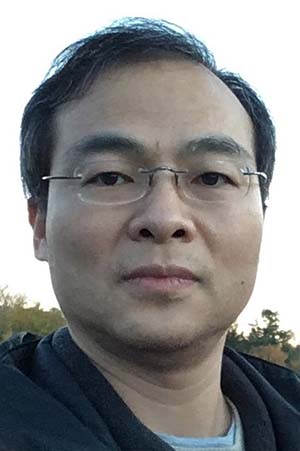 Tzu-Chieh Wei |
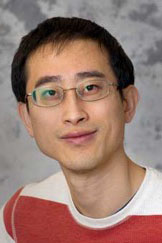 Deyu Lu |
Computer simulation of physical systems based on fundamental quantum mechanical principles has played a pivotal role in our understanding of materials properties and physical phenomena, which form the backbone of technological development. However, classical computers have an intrinsic bottleneck in simulating many-body quantum systems, as computational time scales with the size of the Hilbert-space that grows exponentially with the number of particles in the many-body Hamiltonian. This exponential barrier prohibits accurate prediction of many material properties, especially when the constituent particles are interacting strongly. Quantum computing has been recognized as a potential game changer in overcoming such an obstacle, as envisioned by pioneers, such as Manin, Feynman, Deutsch, and Lloyd. Recent experimental progress in fabricating quantum computers with over 50 qubits bodes well the potential application of quantum computers for solving problems in materials sciences.
Here, we propose to exploit quantum computers to tackle strongly correlated physics to overcome the exponential barrier of classical simulation of quantum many-body systems. By encoding entanglement among qubits, a quantum computer can represent many-body states at a polynomial cost. The overarching scheme is to pursue a quantum-classical hybrid approach in order to combine the best of classical and quantum computers by replacing the most expensive classical algorithms with quantum algorithms. In practice, we will integrate quantum and classical software and carry out proof-of-principle simulations on existing prototypical quantum computers. We will also extend this hybrid quantum-classical approach to study dynamics and finite-temperature effects. Such a new capability, if successful, will have a tremendous impact on the physical understanding of correlated materials, including phase diagram, spectroscopic properties and materials design involving d or f electrons. Given that the currently available quantum computers are noisy without full fault-tolerant capability, we will also assess their practicality when extrapolating to large system sizes
